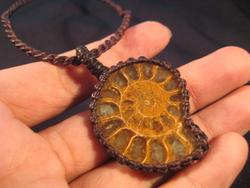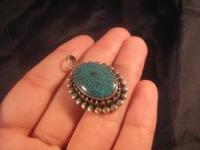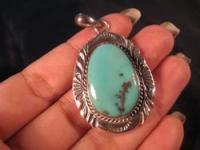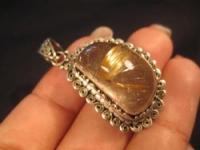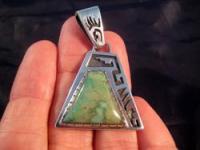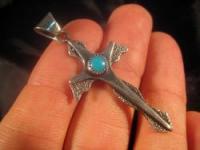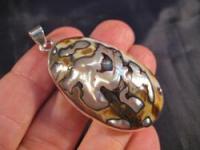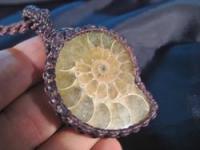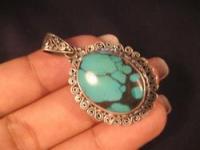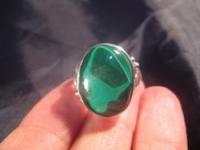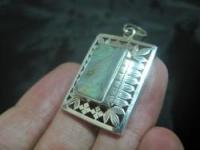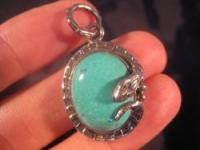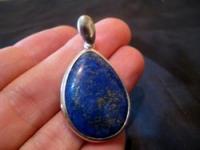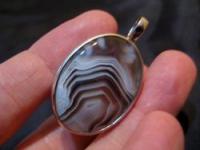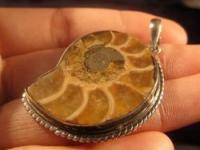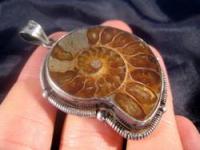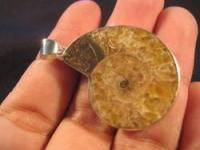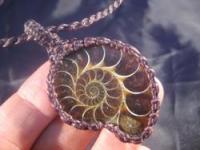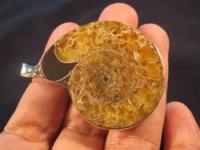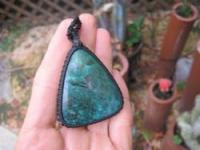This is an amazing natural Ammonite fossil pendant necklace.
It was hand woven by a guy on Kowsan road in Bangkok and I bought it on my last trip there knowing somebody would love to have it.
The necklace string consists of a strong woven fiber. The string has a very slight waxy feel to it as the braider needed to apply wax to it when making it. He said water would not hurt it so if desired some light soapy washing should removed it if desired.
The Ammonite fossil comes originally from Madagascar. The fossil has a transluscent Burgundy color and the necklace string a really cool braided design.
Some history of Ammonites:
The Ammonites or Ammonoid Cephalopods appeared in the late Silurian period about 400 million years ago. They became extinct along with the dinosaurs at the end of the Cretaceous period 65 million years ago. There name comes from their spiral shape appearing similar to rams horns. This name can be traced back to the Greeks comparing them to the Egyptian god of Ammon who is depicted as wearing Rams horns. They likely ate fish, crustaceans, and other small creatures. They themselves were preyed upon by large marine reptiles like Mosasaurs and some shells even bear the teeth marks from such attacks.
Fossil Size: 1.5" tall and 1.2" wide ( 3.8 cm tall and 3 cm wide )
Necklace Length: 19" long
Weight: 14 gm ( 0.50 oz )
Half price shipping for all additional items for multiple orders.
It was hand woven by a guy on Kowsan road in Bangkok and I bought it on my last trip there knowing somebody would love to have it.
The necklace string consists of a strong woven fiber. The string has a very slight waxy feel to it as the braider needed to apply wax to it when making it. He said water would not hurt it so if desired some light soapy washing should removed it if desired.
The Ammonite fossil comes originally from Madagascar. The fossil has a transluscent Burgundy color and the necklace string a really cool braided design.
Some history of Ammonites:
The Ammonites or Ammonoid Cephalopods appeared in the late Silurian period about 400 million years ago. They became extinct along with the dinosaurs at the end of the Cretaceous period 65 million years ago. There name comes from their spiral shape appearing similar to rams horns. This name can be traced back to the Greeks comparing them to the Egyptian god of Ammon who is depicted as wearing Rams horns. They likely ate fish, crustaceans, and other small creatures. They themselves were preyed upon by large marine reptiles like Mosasaurs and some shells even bear the teeth marks from such attacks.
Fossil Size: 1.5" tall and 1.2" wide ( 3.8 cm tall and 3 cm wide )
Necklace Length: 19" long
Weight: 14 gm ( 0.50 oz )
Half price shipping for all additional items for multiple orders.
Payment Methods


Shipping
$4.00
Please Login or Register first before asking a question.
